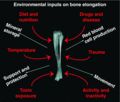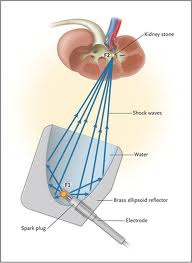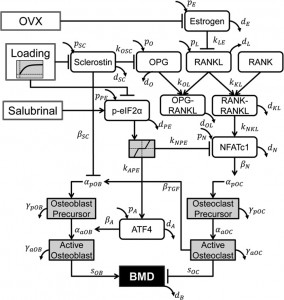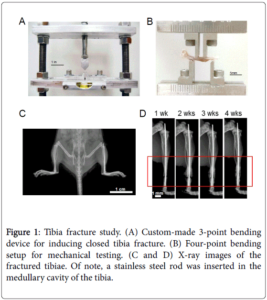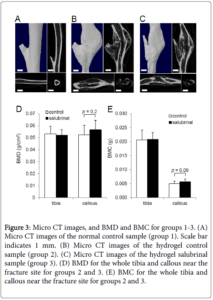How To Look Taller By Wearing Thick Heeled Height Increasing Insoles
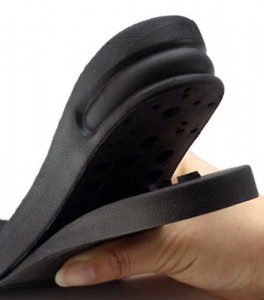 Sometimes maybe the easiest thing for us to do is to just to give a temporary fix to our psychological issues with our short stature. The simplest way that I can think of on how to make ourselves at least look taller is to wear shoes with thicker heels, those shoes known as lifts, or some type of height increasing insoles.
Sometimes maybe the easiest thing for us to do is to just to give a temporary fix to our psychological issues with our short stature. The simplest way that I can think of on how to make ourselves at least look taller is to wear shoes with thicker heels, those shoes known as lifts, or some type of height increasing insoles.
Previously, I had reviewed before the YOKO and the KIMI height increasing insoles (Available Here) which are exactly the same product, with a slightly different name., as well as these in-sock height increasing arched insoles. (Review Available Here). Those products are no longer prevalent on the internet was very popular and marketed extensively maybe 5 years ago, when the internet was a younger entity. Of course, they never worked. Putting the insoles inside one’s shoes will make one look taller to other people, but it won’t stimulate some type of secret pressure point to release excess growth hormones to make a person grow taller. That is not going to happen.
These are the new models of thick heeled insoles sold in the market today…
Height Increase Elevator Shoes Insole (by Calden) – Price: $7-$8
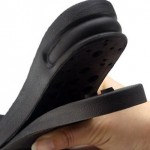 Description: It seems to be able to give the user around 1-1.5 inches of extra height. This particular model is made of two pieces. The 2 pieces are detachable from each other. The top plastic piece gives an extra height of around 1 inch, and the bottom part gives an additonal 0.5 an inch. If the size of the insole is too long or wide, you can take some scissors and trim the edges to fit for the right shoe size. Since the lift is probably going to be stuffed secretly in one’s shoes, that will take up space where the feet is usually be at. This means that you would actually need to get a deeper or larger sized shoe than – Read more
Description: It seems to be able to give the user around 1-1.5 inches of extra height. This particular model is made of two pieces. The 2 pieces are detachable from each other. The top plastic piece gives an extra height of around 1 inch, and the bottom part gives an additonal 0.5 an inch. If the size of the insole is too long or wide, you can take some scissors and trim the edges to fit for the right shoe size. Since the lift is probably going to be stuffed secretly in one’s shoes, that will take up space where the feet is usually be at. This means that you would actually need to get a deeper or larger sized shoe than – Read more
Honeycomb Shaped Gel Elevator Shoes Half Insole – Price: $7.50
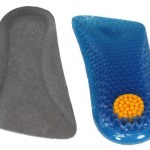 Description: This type of insole is actually known as a half-insole. It is just “half” of the entire thing because it is only for the back part of the feet. When a person walks with this thing stuffed in the soles of the inside of the shoe, it would probably feel like their feet is raised in the back. The net result is that from the outside, appearance wise, they would look to be slightly taller. We are not sure how comfortable this product would actually be for any person since it might cause the arch of the feet to become bent in the wrong angle causing long term feet problems. A common problem is what is known as Flatfeet – Read more
Description: This type of insole is actually known as a half-insole. It is just “half” of the entire thing because it is only for the back part of the feet. When a person walks with this thing stuffed in the soles of the inside of the shoe, it would probably feel like their feet is raised in the back. The net result is that from the outside, appearance wise, they would look to be slightly taller. We are not sure how comfortable this product would actually be for any person since it might cause the arch of the feet to become bent in the wrong angle causing long term feet problems. A common problem is what is known as Flatfeet – Read more
Half Elevator Insole for Men (by Calden) – Price: $7
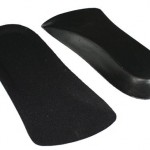 Description: This model of elevator insole is also of the half-insole variety. This particular model has a function of increasing a person’s height by upwards of even 1/2 an inch. I am a little surprised by the model since from the pictures we see from the side view, it looks kind of thin. The material that this model called the half elevator insole is made from is a ultra-light weight foam. I remember seeing models of this type in some large retail stores in the US but it is very prevalent in Asian countries like South Korea where wearing stuffing height increasing insoles is commonly practiced. This rather thin type might be – Read more
Description: This model of elevator insole is also of the half-insole variety. This particular model has a function of increasing a person’s height by upwards of even 1/2 an inch. I am a little surprised by the model since from the pictures we see from the side view, it looks kind of thin. The material that this model called the half elevator insole is made from is a ultra-light weight foam. I remember seeing models of this type in some large retail stores in the US but it is very prevalent in Asian countries like South Korea where wearing stuffing height increasing insoles is commonly practiced. This rather thin type might be – Read more
Height Lifting Inserts (For both Men and Women) – Price: $17
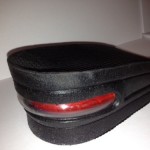 Description: Our first impression of this type of insole from just the first picture is that it is one which we have seen before. We are referring to the elevator shoes insoles, which was the very first quick review we had done. Notice how in both this model, and the original model we looked at they have almost the exact same design. There is two main pieces, with the thicker piece being on top. The only noticeable difference we can see from just looking at the pictures is the back area. This model has a type of glossy plastic back side. I would guess that the plastic in the back is for support when a person is walking – Read more
Description: Our first impression of this type of insole from just the first picture is that it is one which we have seen before. We are referring to the elevator shoes insoles, which was the very first quick review we had done. Notice how in both this model, and the original model we looked at they have almost the exact same design. There is two main pieces, with the thicker piece being on top. The only noticeable difference we can see from just looking at the pictures is the back area. This model has a type of glossy plastic back side. I would guess that the plastic in the back is for support when a person is walking – Read more
The WSWS 3-Layer Air Cushion Insole – Price: $18-$20
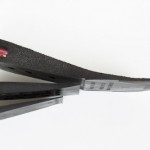 Description: Out of all the types of foam insoles we have seen so far, this model is the most expensive of them all. However, it makes up for the price with a degree of assured quality in the durability of the insole. The seller of the product is WSWS. The extra cost is also explained by the fact that there is 3 separate layers to the increased thickness. It translates to a total of 2 and a half inches. That is a lot more than any other insoles sold out there. However, with that type of increase, the big problem turns into us asking the question “How will we ever be able to walk in a regular shoe with that also stuffed inside?” – Read more
Description: Out of all the types of foam insoles we have seen so far, this model is the most expensive of them all. However, it makes up for the price with a degree of assured quality in the durability of the insole. The seller of the product is WSWS. The extra cost is also explained by the fact that there is 3 separate layers to the increased thickness. It translates to a total of 2 and a half inches. That is a lot more than any other insoles sold out there. However, with that type of increase, the big problem turns into us asking the question “How will we ever be able to walk in a regular shoe with that also stuffed inside?” – Read more
LiftKit Lo-Top Insoles (For Men) – Price: $25-$30
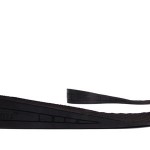 Description: This was the one model of insoles which we have seen before. It is called the LiftKit Lo-Tope Insole. Notice from the picture how well it is designed. I personally like it for its sloping design. This means that the feet that goes on top of it won’t feel any discomfort, unlike putting a half-arch underneath it. The human feet does require an arch, but the soft foam nature of all of these insoles suggest that when you stand up on the insoles, the foam will give way to the contours of your feet. If we take into consideration the give of the foam, there will be obviously a decrease in the height gained. – Read more
Description: This was the one model of insoles which we have seen before. It is called the LiftKit Lo-Tope Insole. Notice from the picture how well it is designed. I personally like it for its sloping design. This means that the feet that goes on top of it won’t feel any discomfort, unlike putting a half-arch underneath it. The human feet does require an arch, but the soft foam nature of all of these insoles suggest that when you stand up on the insoles, the foam will give way to the contours of your feet. If we take into consideration the give of the foam, there will be obviously a decrease in the height gained. – Read more
The LiftKits Universal Insole – Price: $23-$27
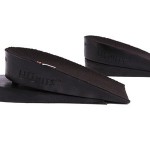 Description: This model is one of the half dozen or so models sold by LiftKits. Most of the other models are designed for either men or women, but this model is unisex, hence the name the LiftKits Universal Insole. This model would give a person up to 1 1/4th of an inch in height increase. Of course, that is if you are using of the two separate pieces on top of each other. The top thick heel would give 3/4th of an inch, and the bottom one would give half an inch. I personally am not a big fan of the half-insole types, especially if they are too high up. If you are going to be wearing those type, I suggest that the – Read more
Description: This model is one of the half dozen or so models sold by LiftKits. Most of the other models are designed for either men or women, but this model is unisex, hence the name the LiftKits Universal Insole. This model would give a person up to 1 1/4th of an inch in height increase. Of course, that is if you are using of the two separate pieces on top of each other. The top thick heel would give 3/4th of an inch, and the bottom one would give half an inch. I personally am not a big fan of the half-insole types, especially if they are too high up. If you are going to be wearing those type, I suggest that the – Read more
Rosallini Nest Design Flannel Heel Gel Insoles – Price: $4
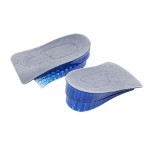 Description: Whereas before, we reviewed basically two sellers or middleman of thick heeled insoles, Calden and LiftKits, this other model type is sold by Rosallini. We have never heard of this seller or distributor. The type of heeled gel insoles that is sold by Rosallini, which seems to be an all purpose middle man of stick retail products, including jewelry, accesories, and novelty items. I took a look at this exact model called the Nest Deisgn Flannel Heel gel and was not very impressived. The heel are just too thick and tall and bulky for a person to use without hurting themselves. It would however give – Read more
Description: Whereas before, we reviewed basically two sellers or middleman of thick heeled insoles, Calden and LiftKits, this other model type is sold by Rosallini. We have never heard of this seller or distributor. The type of heeled gel insoles that is sold by Rosallini, which seems to be an all purpose middle man of stick retail products, including jewelry, accesories, and novelty items. I took a look at this exact model called the Nest Deisgn Flannel Heel gel and was not very impressived. The heel are just too thick and tall and bulky for a person to use without hurting themselves. It would however give – Read more
Silicon Gel Insert Insole Pads – Price: $4
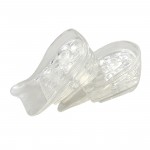 Description: This is not an insole, but still a type of pad you would stick inside a sneaker or dress shoe to provide a slight bit of height. The pad is obviously clear or transparent, and the material used is silicone, which gives it a much more malleable and deformable quality to it. For each of the pairs of silicon gel insert pads, there will be 5 different layers, which will each provide a little less than 1/4th of an inch. The 5 layers together will give a person who is standing up just about 1 inch of height increase. I personally have bought one of these before from a street vendor in Asia and tried them on. The feeling was – Read more
Description: This is not an insole, but still a type of pad you would stick inside a sneaker or dress shoe to provide a slight bit of height. The pad is obviously clear or transparent, and the material used is silicone, which gives it a much more malleable and deformable quality to it. For each of the pairs of silicon gel insert pads, there will be 5 different layers, which will each provide a little less than 1/4th of an inch. The 5 layers together will give a person who is standing up just about 1 inch of height increase. I personally have bought one of these before from a street vendor in Asia and tried them on. The feeling was – Read more
How To Wear These Insoles Comfortably
The way that a lot of these insoles are shaped, there would be no way to even fit them on the back of the inside of any shoe. Some of the insoles claim to be able to raise a person’s height by even 2 and a half inches. There are many shoes where the top edge don’t even reach that tall. If you tried to put that insole inside, it might be too wide or too tall for the shoe. If the insole does get inside, maybe there will be no more room for a person to put their own feet in.
Even if you could get your feet inside the space above the insoles in the shoes, it might be too tight for your feet. When you finally do manage to stand up, walking with the insoles might be extremely uncomfortable. That is why I wanted to talk about a few tips on how a person who plans to wear these insoles can relief discomfort or pain.
Tip #1: Pick a shoe size around 2-3 sizes bigger than one’s feet. That increased shoe size, will give more width and length to fit the insoles inside. The size increase would also mean the shoe would be slightly taller or deeper. When you put the insoles in, you will still have enough room for the insoles.
Tip #2: Wear comfortable socks. Some of the insoles might have a type of foam or gel that would be sticky to the soles of the feet. Wear socks.
Tip #3: Buy & put around 3-4 insoles stacked together. Most insoles sold will give only about 1/4th of an inch in height, 1 cm at most. To get at least 1 inch of noticeable change in your appearance, you would want to get more than 1.
Tip #4: Avoid the gel type of insoles. They are too soft and if you use them too long, they can loss the structural integrity and become squished, turning the insole into a thin pancake, providing nothing at all.
Tip #5: Avoid the half insoles. The half insoles if they are stacked on top of each other will create a type of wdge shape, which has a very big angle. There would be no way a person can put their feet inside the shoe with a high wedge.
Some Background on Wearing Insoles and Arches To Look Taller
I remember that Sky, the creator of the website LimbCenter.Org even did a comparison on how easy and well it would be to just put thick heel insoles into a person’s shoes to gain upwards of 1-2 inches of temporary height. He concluded that the the result of just putting a thick heeled insole into the shoes did have a small effect. It would seem that 1 of those insoles would give maybe 1/4-1/8th of an inch in height increase, which is almost completely unnoticeable to most people, unless a person was standing next to a stadiometer or something. I sort of say that if a person just wanted to look taller temporarily, add more than just 1 insole in there.
There has even been at least one really popular and well accepted company started in recent years by a semi-famous celebrity male model Derek White, who started the company LiftKits. His product is the Liftkit Insoles, which is another type of insole. What sets his models apart from the others in the market has been the way the layers of the insoles snap on together, which is sort of a clever spin on an old idea. We did a review on the Lift Kits in a very old post (Available Here). Since this Derek White guy never claimed that the insoles he sells can actually make a person become taller, but just look taller, we fully supported him and his endeavor. I personally don’t seem anything wrong with promoting and selling some of these insoles, as long as one is being completely honest what what the product can actually deliver and provide value for the customer.
For a little bit of perspective to realize how big the craze of wearing insoles for increased height are, look at this video I uploaded more than a year ago. I found this line of insoles being sold on the side of a local street in Seoul, South Korea. The guy who was selling the thick heeled cushions seemed very nonchalant of this practice.
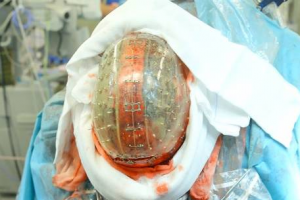 There are places on the internet which I read up on which reveal some of the most interesting medical and scientific innovations going on in our time. This recent story I heard shows that there are mays to increase our overall height than just alternations to our limbs.
There are places on the internet which I read up on which reveal some of the most interesting medical and scientific innovations going on in our time. This recent story I heard shows that there are mays to increase our overall height than just alternations to our limbs.
